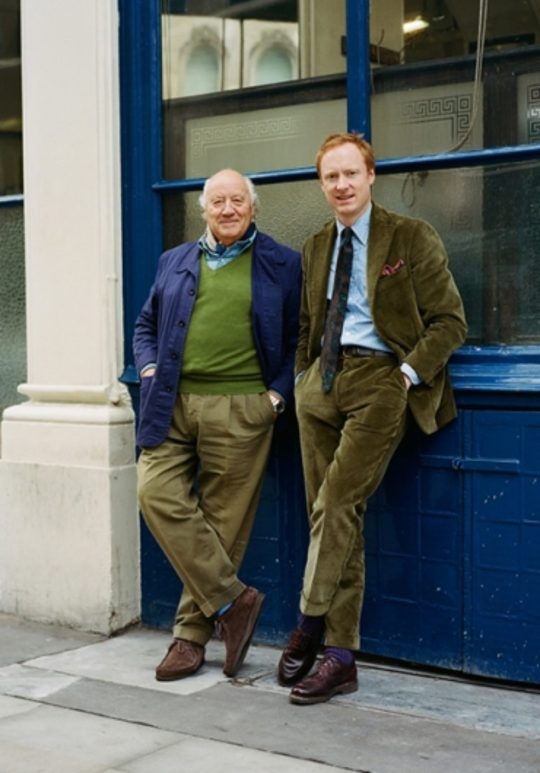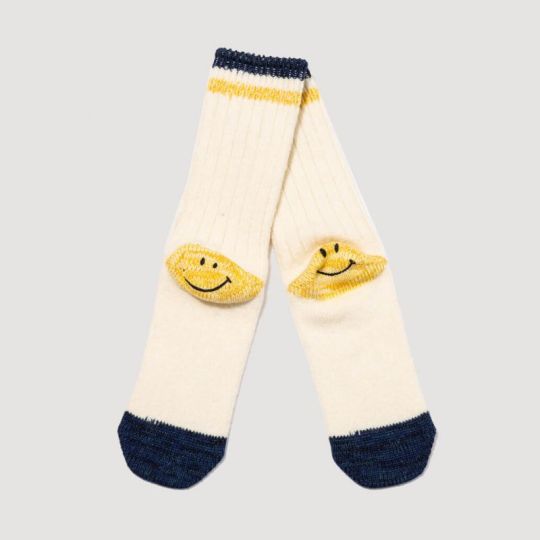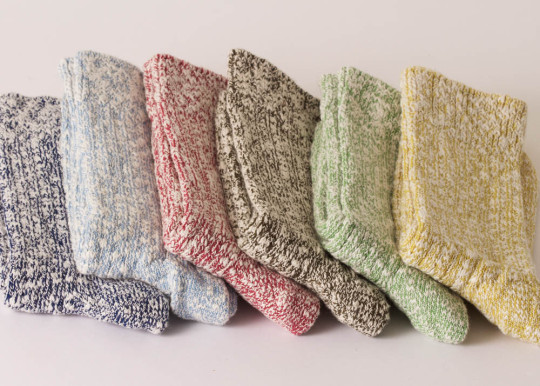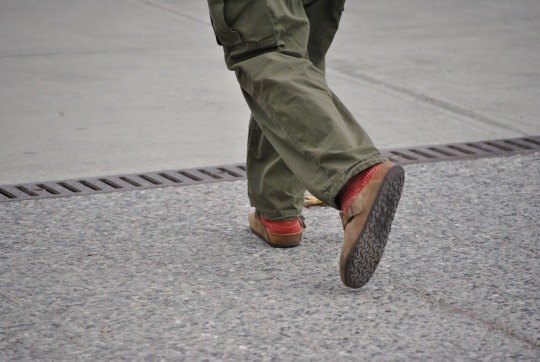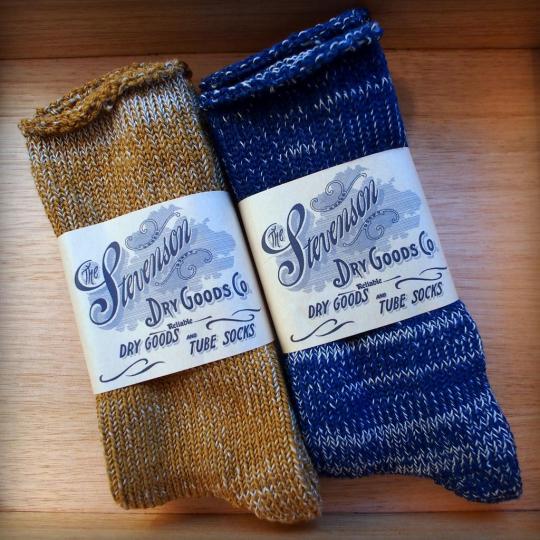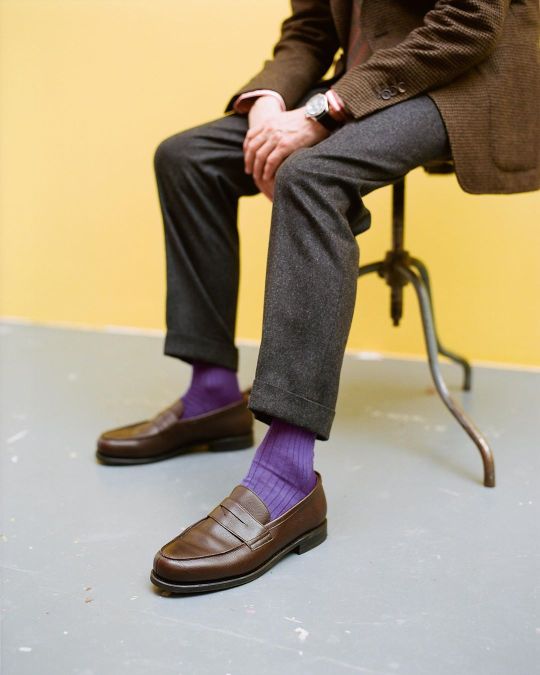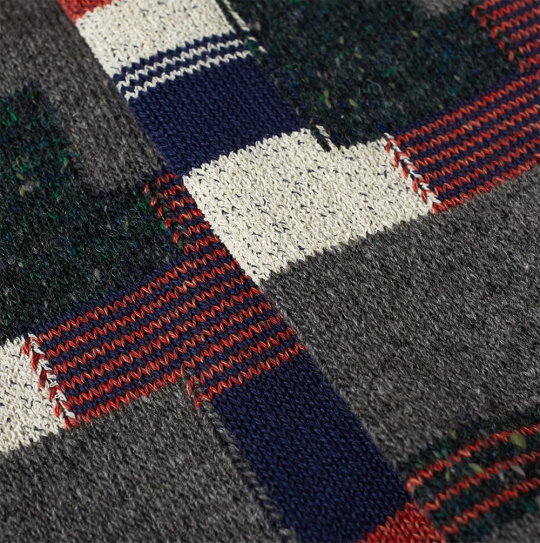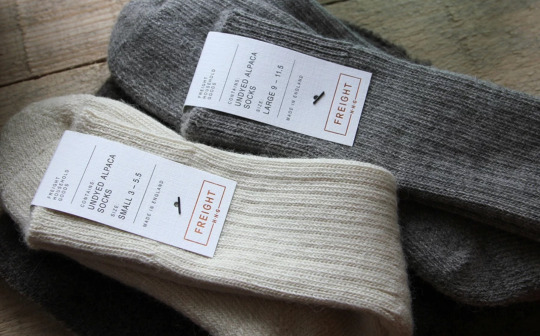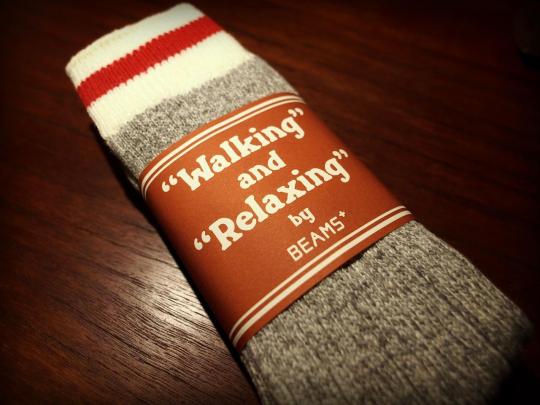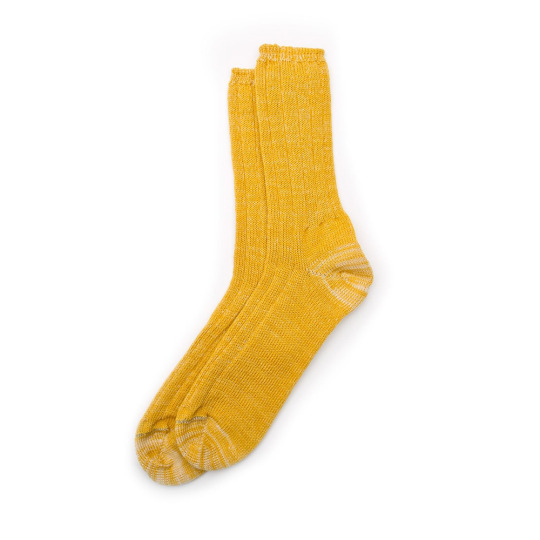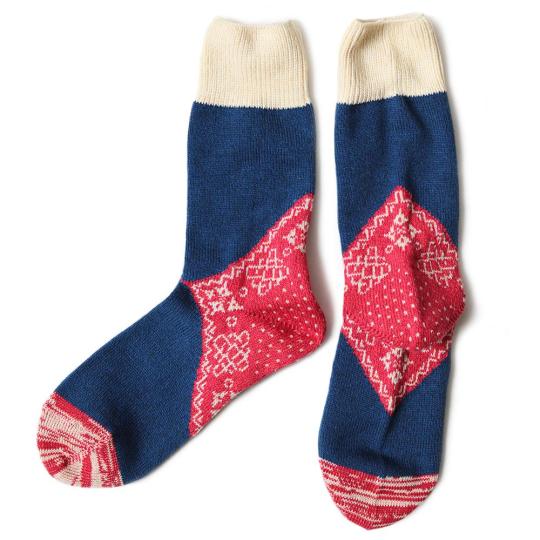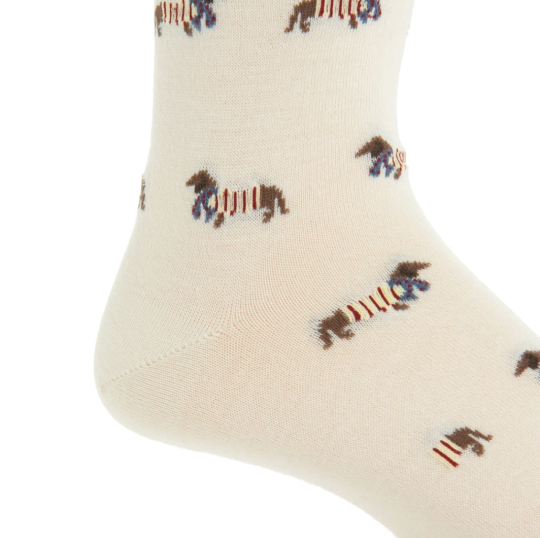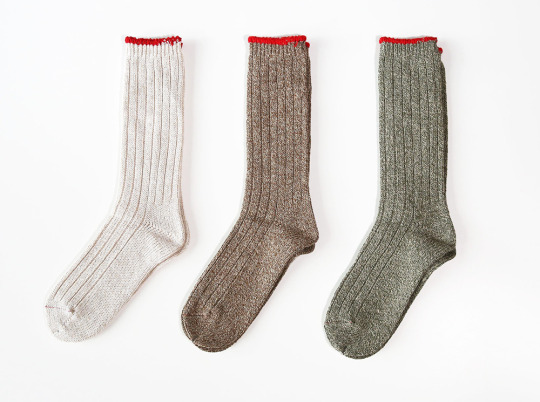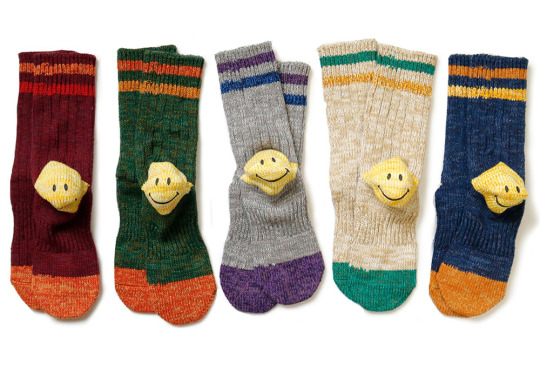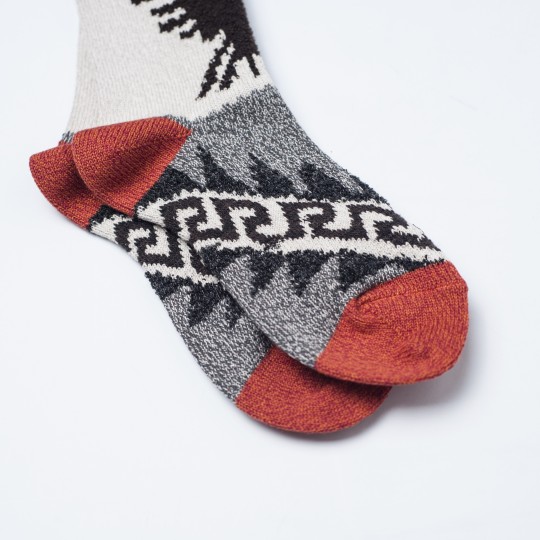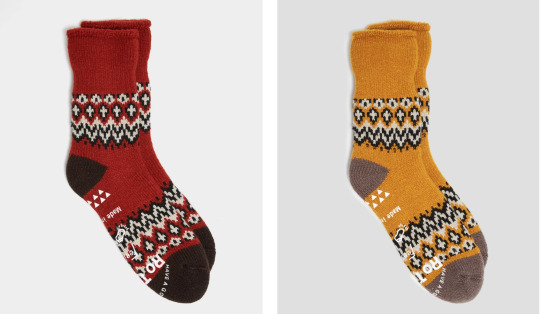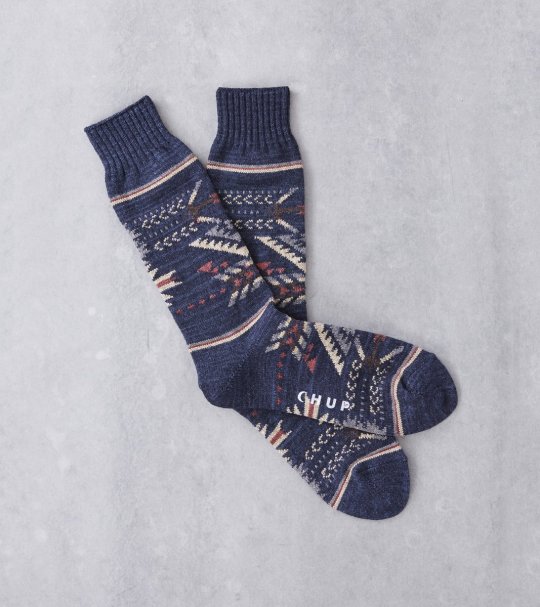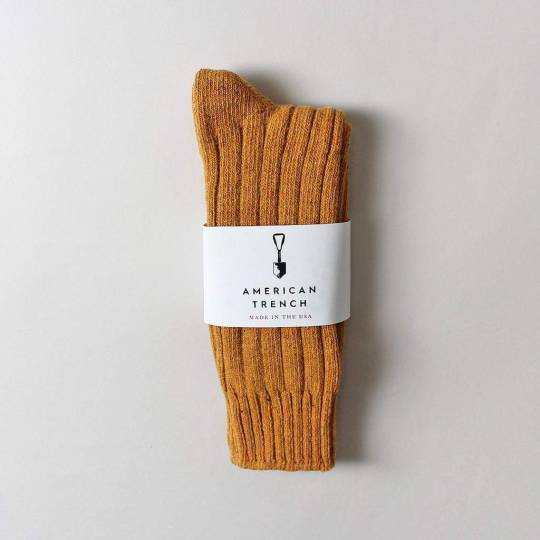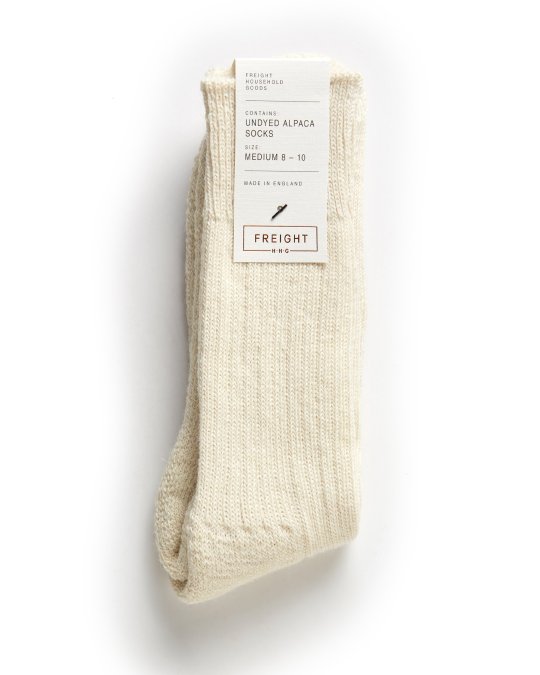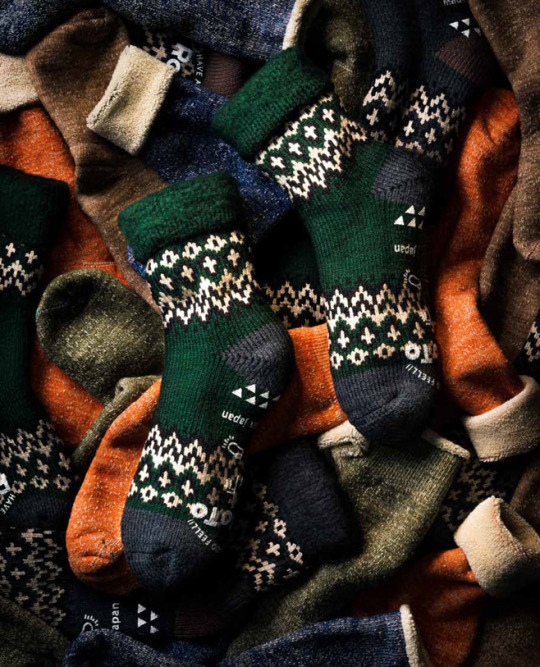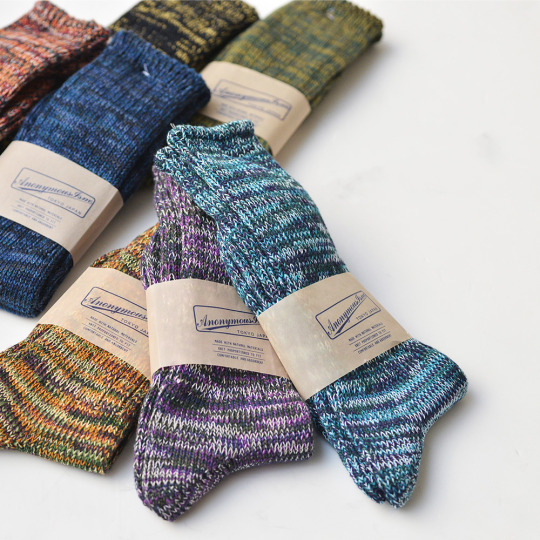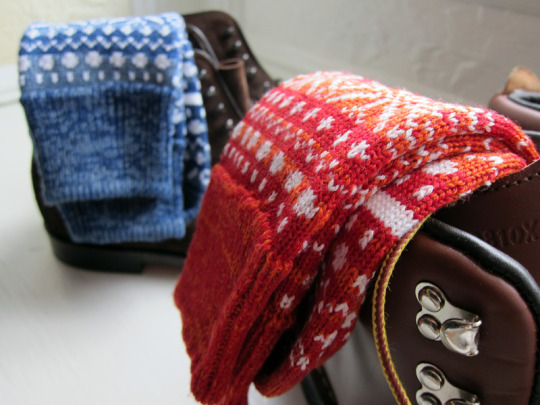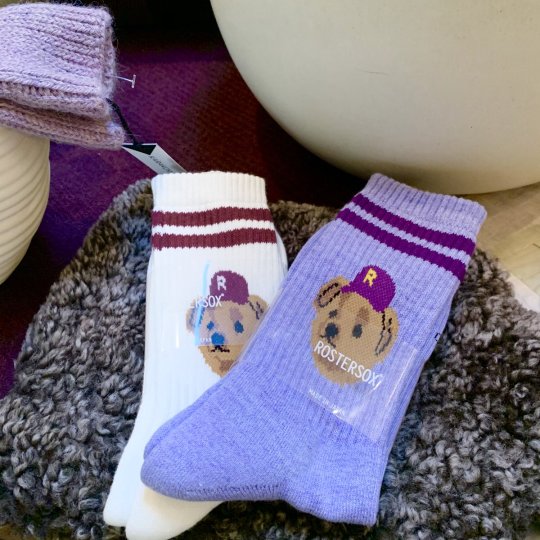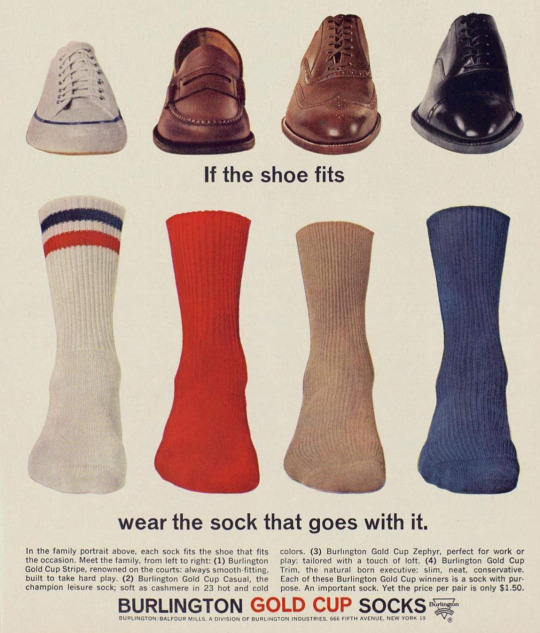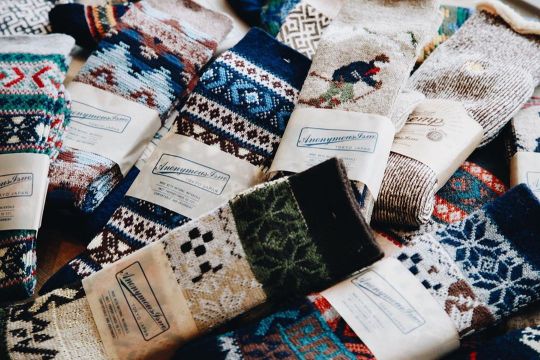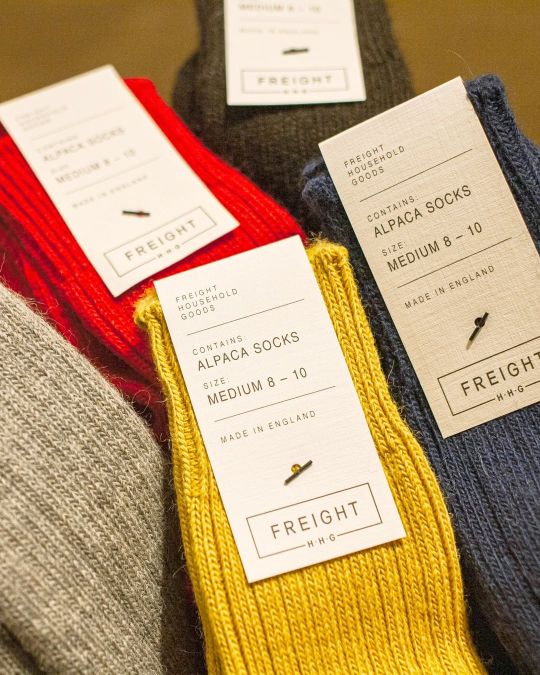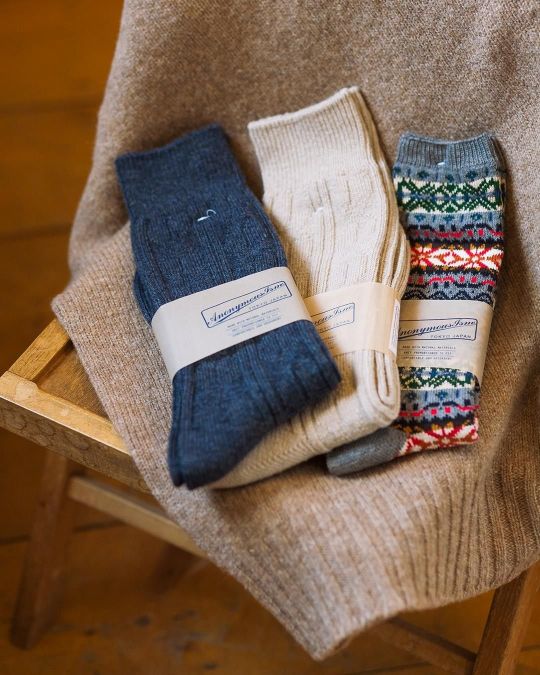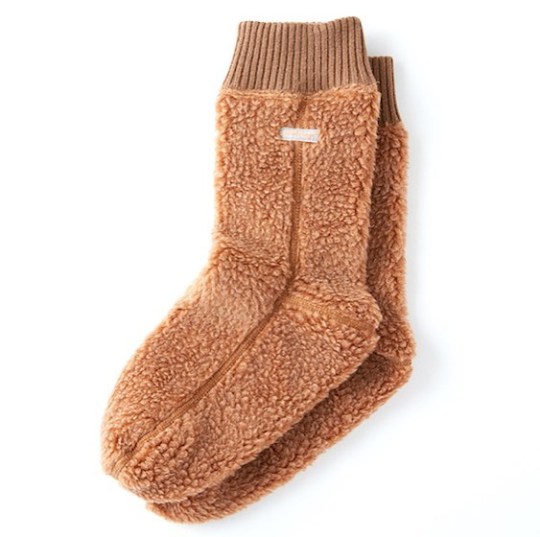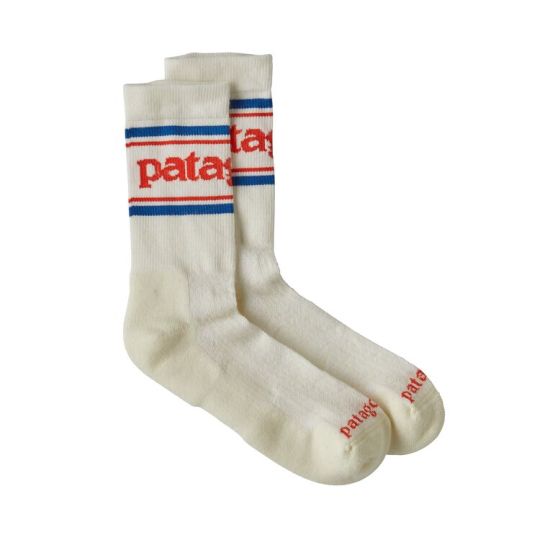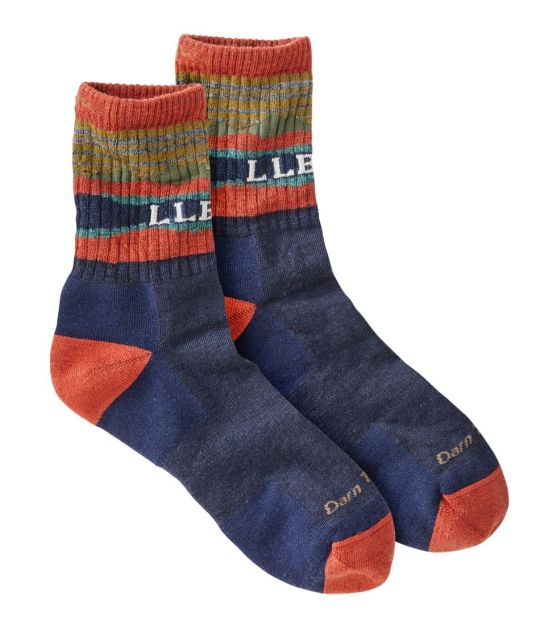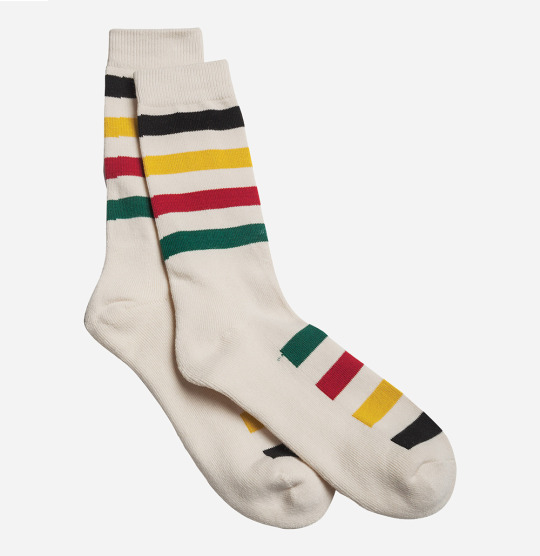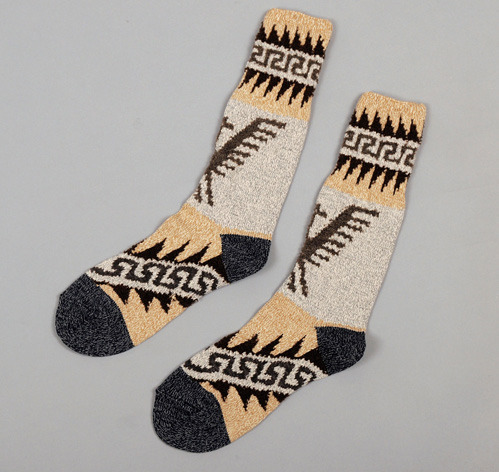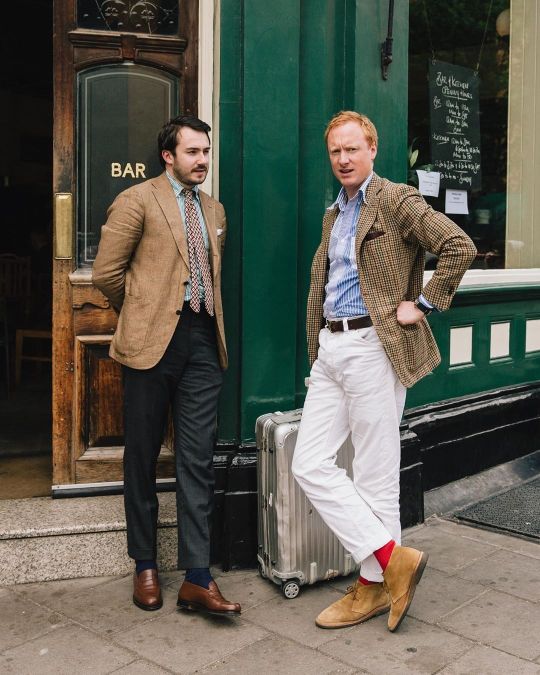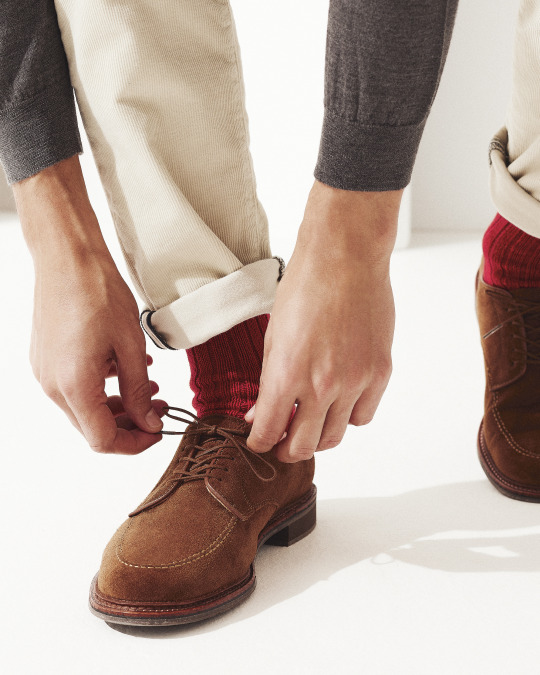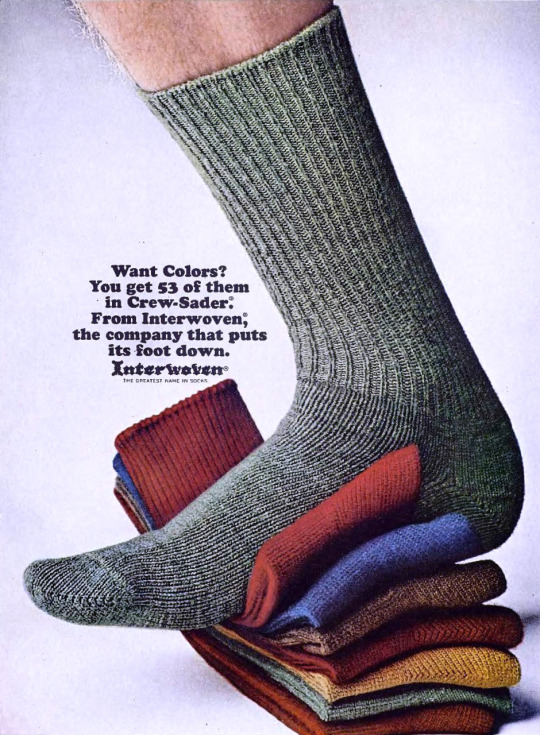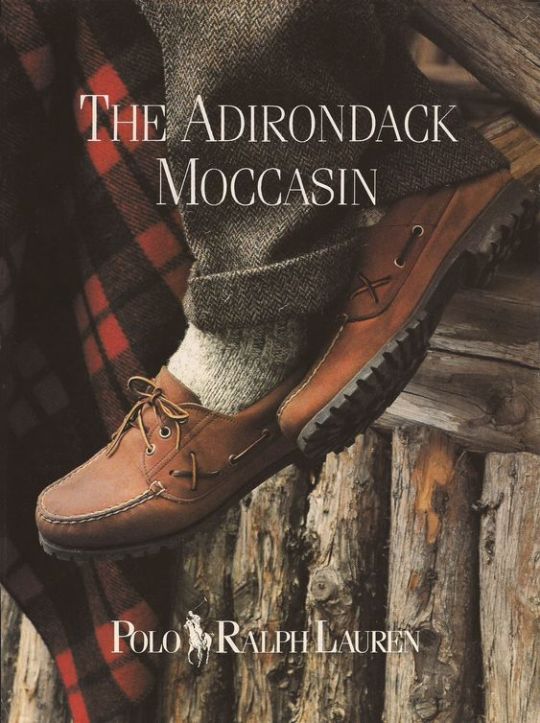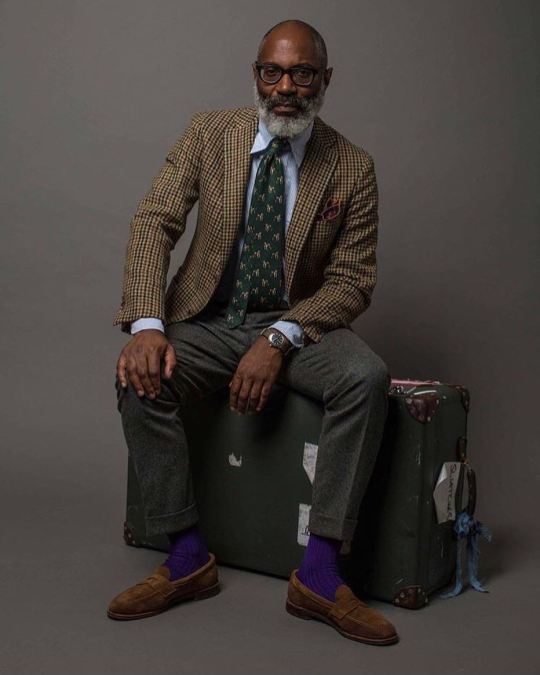
There’s a small shop in Rome called Gammarelli that’s tucked away behind the Pantheon. At first glance, it may not seem different from the many family-owned clothiers scattered throughout Italy. The small, rectangular space is fitted with glass counters and glossy wooden shelves. On the main floor, there are bolts of cloth stacked neatly on top of each other for customers to peruse. Towards the back of the shop, an old, wooden staircase spirals up to the workroom, where tailors labor away on benched tables peppered with pincushions and pieces of chalk. The shop’s head tailor can sometimes be seen here running up and down between the floors for fittings, while a tall, bearded man in a tweed sport coat on the main floor scribbles down orders on a notepad. But between the worsted wools and crisp cotton wovens, you’ll also see deep purple robes, ceremonial swords, and feather-trimmed hats. On the signage outside the shop, below the name Gammarelli, the words read: Sartoria Per Ecclesiastici, or “clerical outfitters.”
If there’s such a thing as timelessness in dress, you can find it here at Ditta Annibale Gammarelli, purveyors of ecclesiastical clothing since 1798. For over 200 years, whenever a new pope is elected, the shop’s tailors and managers rush out the Vatican to meet the supreme pontiff in a chamber called the Room of Tears. They present to him a custom, white papal cassock, cut to a floor-brushing size, and made with some thirty handsewn buttonholes. The Pope slips into his Gammarelli garb and dons the traditional papal accessories: an ermine-trimmed red velvet shoulder cape known as a mozzetta; a white skullcap known as a zucchetto; and a pair of red leather papal shoes. He then steps out on the balcony of St. Peter’s to greet the faithful.
Over the years, after this initial ceremony, each Pope has accessorized his dress slightly differently. John Paul II ditched the red slippers in favor of cordovan colored walking shoes made in his native Poland. When Benedict XVI restored the use of swanky bright red slippers for outdoor attire, Esquire voted him “Accessorizer of the Year.” That prompted the Vatican’s official daily paper to issue the stern reply: “The Holy Father is not dressed by Prada, but by Christ.”
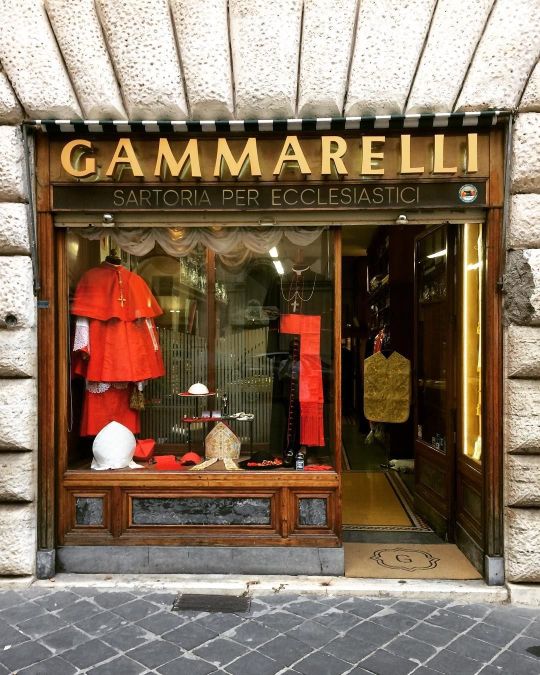
There’s only one thing that connects Gammarelli to big fashion houses in Italy, such as Prada or Gucci. The crowds of tourists who swarm the shop every day don’t come here for ornate regalia, but rather the small and affordable accessories they can take home as souvenirs. At shops such as Bottega Veneta, that may be a bottle of perfume or a relatively modest card case. At Gammarelli, it’s over-the-calf socks made from lisle cotton or merino wool, all long-staple fibers, so they’re durable, and then hand-linked at the toe for comfort.
For a while, Gammarelli only sold socks to people in the clergy, and color was determined by a person’s position (so as to match the rest of their uniform). Black was for seminarians and priests, purple for bishops, and red for cardinals. But things changed in the 1990s when Édouard Balladur became the Prime Minister of France. Shortly after winning the election, he started punctuating his conservative Savile Row suits with cardinal red socks. When an interviewer asked him where he bought his brightly colored hose, he answered: “In a small shop in Rome, called Gammarelli.” The place has been busy with people outside the Church ever since.
There’s something strange about how men receive the very serious issue of sock color. Traditionally, the color of your socks follows one of two simple rules. Some believe you should match the color to your trousers, so they build a seamless line that flows from your hips to the tops of your shoes. Others subscribe to an even more Puritanical approach: always wear navy, except when you’re wearing a black suit with black shoes (in which case, wear black socks). Navy socks are more stylish than black, but allow you to look neat and respectable.
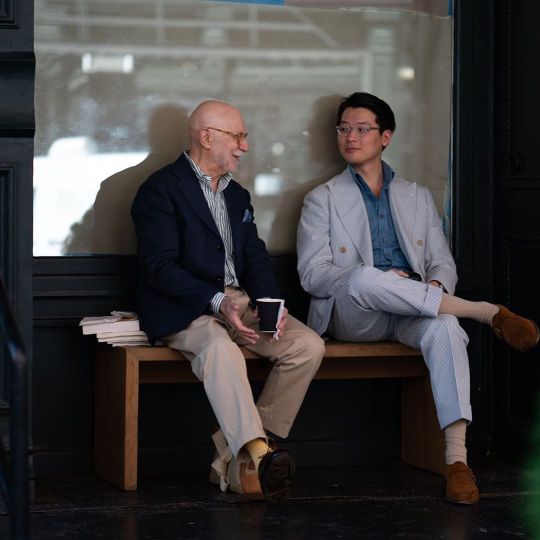
There’s some logic to this. In traditional men’s style, the focus is usually centered on the upper half of an outfit, typically the v-shaped area formed by your jacket, shirt, and tie. This is why it’s often difficult to wear patterned trousers, bright shoes, or unusual socks — they draw the eye downward. But some also regard the sock as a completely separate field for design and expression, “a true accessory rather than an extension.” In his book True Style, Bruce Boyer writes: “Whereas socks once used to be demure — all blacks and blues and greys — today a bit of flair is accepted, even expected. Argyle has a long history in sportswear, but why not wear them with a city suit as long as there’s some tonal connection? Or striped socks, á la Fred Astaire in Flying Down to Rio? Or humorous motifs like pink flamingos, skull & crossbones, unicorns, or just some playful spots?”
For various reasons, perhaps some having to do with the legacy of Oscar Wilde, men’s dress has long been a conservative tradition. Boyer notes that today, we’re ruled more by mood than propriety, and old fashioned ideas about dress can be “seen as rather arbitrary, silly, and stifling.” But when it comes to who gets away with transgressions, it often feels like it’s still about who adheres to a particular masculine code. Following in Balladur’s literal footsteps, the conservative French Prime Minister François Fillon also liked to wear cardinal red socks from Gammarelli. However, he was also a devout Catholic and an otherwise understated dresser, which gave his style a sense of seriousness (he was once nicknamed Droopy for his dull appearance).
Similarly, US President George H.W. Bush famously loved wearing whimsical socks in his old age. But who would tell a man who marked each fifth birthday after his retirement with a skydive — even when illness deprived him of the use of his legs — that he couldn’t? In 2013, he wore socks with his own face on them to a football face-off between New England Patriots and Houston Texans. He laughed when former President Bill Clinton, once a political rival and later friend, gave him deep blue socks with Clinton’s face. And when Bush passed away last year, he was laid to rest in a pair of colorful socks featuring planes flying upwards in formation. They were not only a thoughtful tribute to his love for fanciful socks, but more importantly, his years as a WWII naval aviator and his lifetime of service to his country.
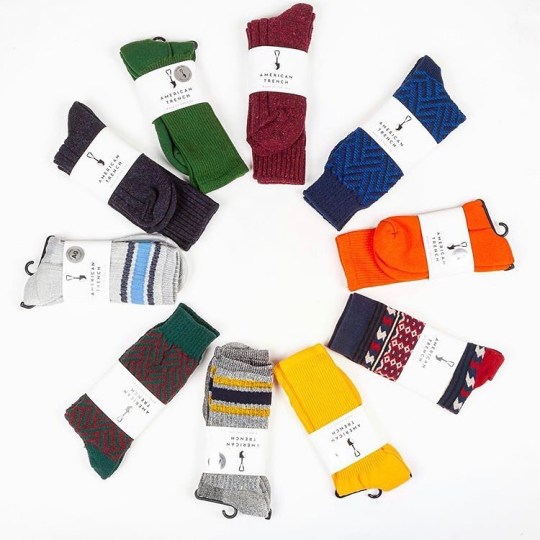
Canadian Prime Minister and fellow sock enthusiast Justin Trudeau, on the other hand, looks much less convincing. For some reason, his socks always make him look like he was tackled by a clothing box subscription service. Maybe it’s because Trudeau doesn’t have the heavy history of Bush’s military service or Fillon’s religious faith as a justification. He does have the striking good looks of Daniel Day-Lewis — who self-selected a pair of magenta Gammarelli socks for his role as a fashion designer in the film Phantom Thread – but not DDL’s stern demeanor. He also doesn’t have the unimpeachable aura of Michael Drake or Beppe Modenese, who have respectively made royal purple and scarlet red socks their personal style signature. For some reason, whimsical socks just don’t work on the young Prime Minister.
Jacob Hurwitz, the co-founder of American Trench, says certain designs are more tasteful than others, and thus easier to wear. “There’s a difference between fun and novelty,” he says. Brilliantly colored socks with words such as “beer” or “bacon” probably should be avoided. Particularly in cheaper, combed cottons, those can, at times, feel a bit too much like the “personality” socks that have replaced ties in Silicon Valley.
“For me, fun is about experimenting with color, texture, and pattern,” Hurowitz continues. “Anonymous Ism’s boro socks are fun and creative. Fun can also be about cabled patterns and high-contrast, marled yarns. We do two sports-related socks with phrases for those sports teams, as well as Kennedy striped socks inspired by something JFK once wore (the design is classic, fun, and not too loud). Those look just as good with Aldens as they do with Ultraboost sneakers. But novelty socks are a bit gimmicky and not my thing. If your sock can be a meme on Twitter, I don’t want it on my leg.”
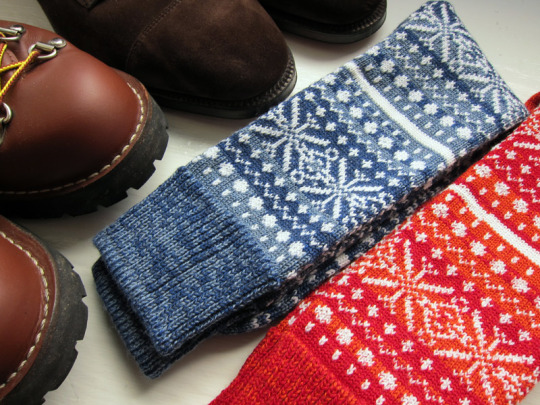
In the last few years, I’ve loosened up on how I feel about fun socks. I still mostly wear navy over-the-calf socks with suits and sport coats. The purple Marcoliani socks I bought years ago rarely get out — they feel too much like I’m trying to be Michael Drake, rather than myself. But I like wearing brighter colors in the summer, such as steel blue, and then forest green with brown tweeds and tan trousers during fall/ winter. Earlier this year, I bought a pair of Dapper Classics’ USA flag socks to wear during the coming election cycle. Mostly, however, I like unusual socks in more casual outfits — American Trench’s wool-silk boot socks in saturated autumnal colors such as rust and ochre; Corgi’s Fair Isle socks for winter holidays; and Kapital’s highly questionable hippie socks in thick, slubby yarns. I even have socks with smiley faces on the heels (I just wish they were slightly bigger for my size 9D foot).
I find it helps to wear something that’s a little better made than your average pair of socks from J. Crew (which, to be sure, are perfectly fine as well). Quality yarns will often have more texture and depth in color than ordinary, combed cotton varieties. The patterns and motifs will also be woven into the fabric, rather than cheaply embroidered, which means you won’t get those bumpy textures that rub up against your foot. Lastly, designing a good pattern takes skill and the right machinery. Higher-end socks often just look more compelling and less like something you might find at Spencer’s Gifts.
“The higher the needle count, the finer the denier of the yarn, and the more detail you can get in the pattern,” explains Dapper Classics co-founder Fred Rich. “Most of our socks are knitted on single-cylinder, 200 needle count machines. The exception is our jacquard patterns, which are knitted on 200 needle count, double-cylinder machines. We have a very good relationship with our mill, to the point where they feel like family, and we’ve invested in the machinery. A great pair of socks also has to be made from good materials. We source two primary yarns, fine merino wool and Egyptian mercerized cotton. Both are colorfast, and the merino wool is superwashed so it can go through a normal laundry cycle without the worry of shrinkage.”
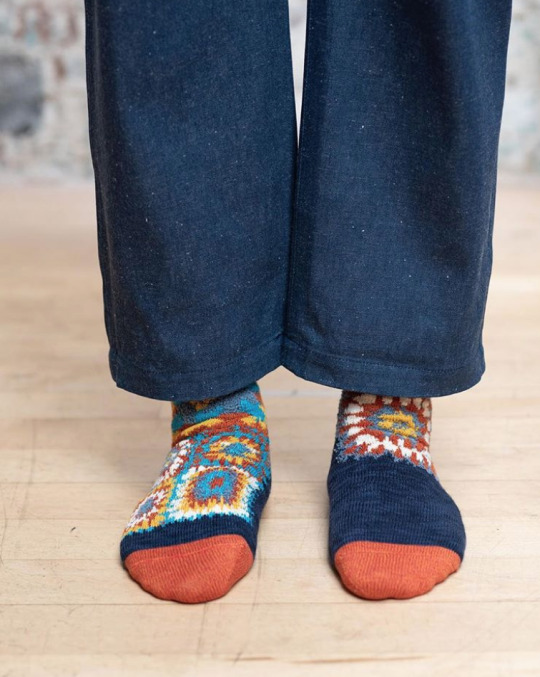
If you’re looking to spruce up a sock wardrobe and want something you can wear with tailored clothing, consider Marcoliani’s over-the-calf slash herringbone socks in navy. They’re more interesting than solid blue, but still professional enough for the office. I also like Marcoliani, Sozzi, and Dapper Classics’ pin dot socks in blue, as well as their solid colors in unusual hues, such as pine green, bay blue, and soft yellow (Bruce Boyer can be seen wearing pale yellow socks with tan chinos further up in this post). Some of Dapper Classics’ socks are decorated with dog motifs, which by the transitive property, are good because dogs are good. Skoaktiebolaget, a sponsor on this site, and O’Connell’s have everything you could want for your holiday trad needs. When shopping for patterned dress socks, pay attention to the material. Not only will mercerized cotton wear cooler than its wool counterparts, but the patterns tend to look crisper too. On the downside, like other hard finished fabrics, fine cotton tends to shine up more easily with wear than fuzzy wool.
For casual attire, Rototo, Kapital, Chup, and Anonymous Ism are among the best that come out of Japan (note that Kapital socks tend to run small). Anonymous Ism agent Grant Bloodworth tells me that his two best selling styles are the navy tie-dye and navy slub crew. Additionally, American Trench’s wool-silk boot socks are among my favorites ever, particularly in rust. The company also has cushioned socks built with sandwich terry footbeds, such as their Kennedy and merino activity socks, which are supremely comfortable (Jacob explains their construction and advantages in this YouTube video).
For something you can wear with neo-retro hiking gear, menswear brand favorites LL Bean, Pendleton, and Patagonia have their own logo’d socks. And I like the casual varieties at Corgi, RosterSox, Thunders Love, Wigwam, Freight, and Beams Plus. For something affordable, check Uniqlo, where you can pick up bright, but tasteful, solid-colored ochre socks for just $3 a pair. Lastly, for those liturgical socks found on the feet of Vatican clergymen, check Mes Chaussettes Rogues (My Red Socks), the official online retailer for Gammarelli. Flashy socks aren’t for every day, but for the right time and occasion, particularly around the holidays, what could be better?
